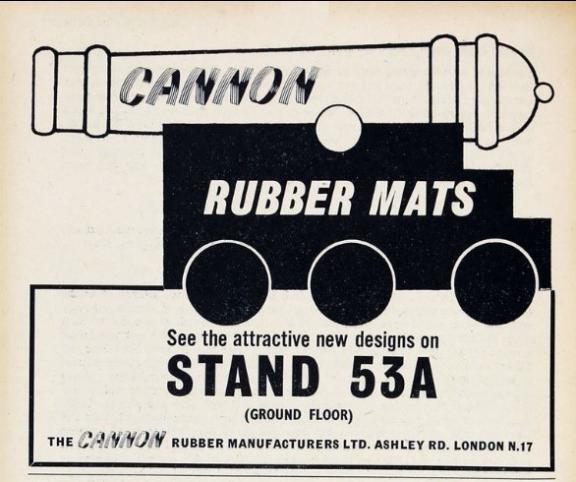Brook House
The ‘invisibility’ of Brook House that once stood at 881 Tottenham High Road might be a possible factor why little or no mention of it appears in 19th and mid-20th century histories of the area. Brook House was also curiously overlooked by speculative developers. In its long life from at least the early 17th century until its demolition in 1956, this substantial and remarkably charming mansion house and estate remained in private hands - as a home.

(Brook House, 1955. From the collections and © Bruce Castle Museum and Archive)
Looking back through time at what was one of the oldest surviving domestic buildings on the High Road into the 20th century, we can discover a long line of former owners and occupants of Brook House. In the essay and first study of the house by Jean Pegram (formerly of Bruce Castle Museum and Archive) in ‘Lost Houses of Haringey’ (1986) we learn that the earliest owners of the estate were the Mallorys of Tottenham. Sir Richard Mallory was a member of the Mercer’s Company and a Lord Mayor of London 1564-65. With land-hungry tenant farmers in Tottenham eager to work the land, a country retreat of 3-acres not far from the outskirts of the City of London was a good income and contributed to political power.
The estate was inherited by Sir Richard's 10-year-old son Edward Mallory, who spent much of his life in Tottenham. He didn’t reach middle age, dying in 1603 and buried in All Hallows Church. It is possible he died of the ‘peste’ – the plague – as it was recorded that 43 out of 70 deaths that year had succumbed to the disease.

(Brook House and its grounds on the 1864 OS map. From the collections and © Bruce Castle Museum and Archive)
The 17th century saw the wealthy Barkham family owning the estate, followed by the Ambrose family towards the end of the 1600s until 1720. After that a succession of tenants who farmed the land occupied the house, with absentee landlords. In 1754 the house was leased to an eminent physician Dr Matthew Clarke, who had a long career at Guy’s Hospital. His will bequeathed money to the inhabitants of Reynardson’s almshouses to be distributed each Christmas. In 1778 the late Dr Clarke’s nextdoor neighbour moved in. River Dickinson was a trustee of the Reynardson’s almshouses, as was his father before him, and the philanthropic widows that followed.
By 1818 a Portuguese merchant, Cajaton Dias Santos became a tenant for the next ten years and was involved in parish life. A succession of other families followed until the Kelmentakis became the last family to own Brook House from 1898 until 1956. By this time this stretch of the High Road was an uneasy mix of industrial and residential buildings – perhaps not to the taste of all.
The Klemantaskis were an Ashkenazi Jewish family of Dutch and Australian nationalities, with possible Polish and Russian ancestry. Maurice Klemantaski kept the house and the garden for family but turned the perimeter of the estate to industrial use for his own small factory – the Boundary Wool and Hair Mills, a family run firm employing a small workforce. The factory continued until 1955, a year before Brook House was demolished.

(Interior of Brook House – the home of the Klemantaskis showing the beautifully carved oak staircase, 1955)
The name Brook House was likely given to the building in the early 19th century. It is said this is unlikely to take its name after the Moselle Brook to the south or to Pymmes Brook to the north but refers to a small underground tributary to either one of these. It would have fed an ornamental water feature in the grounds of Brook House and also a stretch of water that backed the houses of Brook Place.
Further resources:
Lost Houses of Haringey (1986), pp.76-86 (available from the shop at Bruce Castle Museum and Archive)
Cannon Rubber Factory
The site of Brook House was acquired by the Cannon Rubber Factory (known as the Cannon Rubber Manufacturers Ltd) in 1955. It is likely that the house was then demolished to make way for the building of its new factory. It was an opportunity for expansion. From 1936 when the company first started, the firm had a site at 5a Welbourne Road. It also had a site during the 1950s at Ashley Road in Tottenham Hale.

The company was known for producing a wider range of products from rubber including hot water bottles, soles of shoes and bottle teats for baby bottles. They even produced rubber seaside buckets for children during the 1950s – very robust! In later years they were known more for manufacturing rubber mats for cars.
The factory closed its doors in Tottenham to merge with another company outside London and to make way for development of the site. By September 2014 Brook House Primary School and social housing of Rivers Apartments were on the site, taking its name from the ancient house that had gone before it.

(From the collections and © Bruce Castle Museum and Archive)
Location
A Forgotten House
881 High Road
Tottenham
N17 8EY
United Kingdom